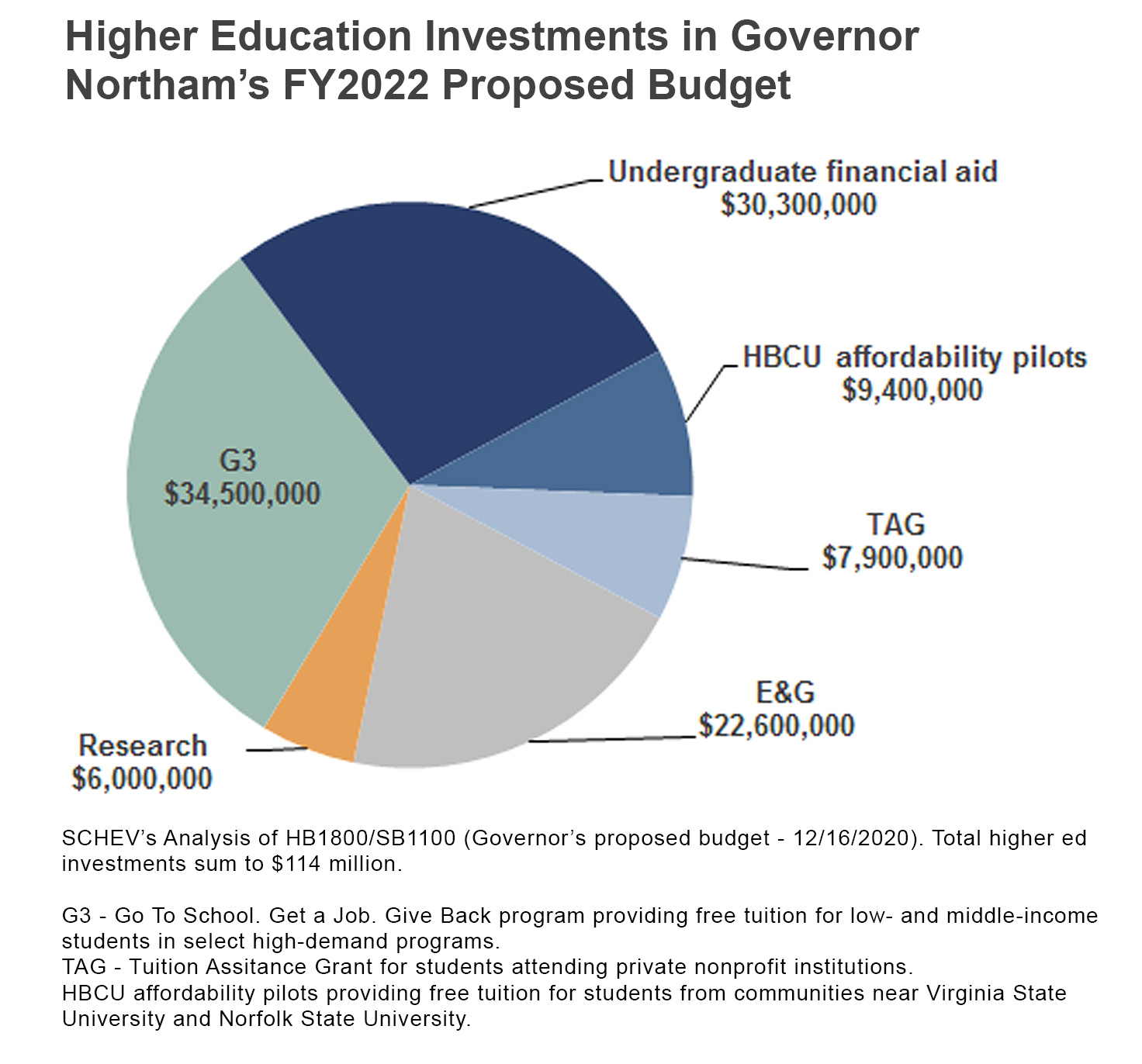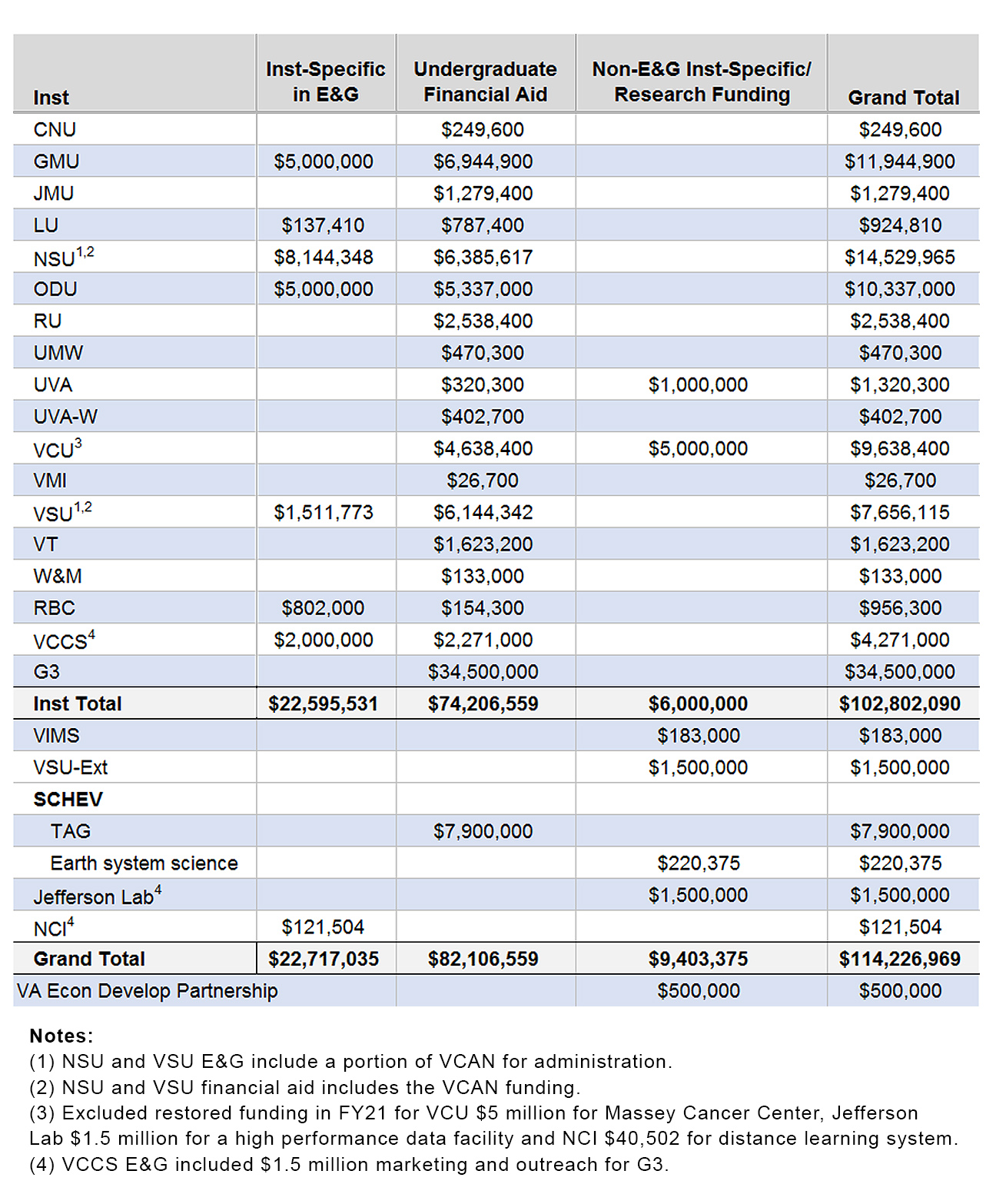Virginia’s 2020-22 biennial budget, as passed by the Virginia General Assembly last spring, was one for the record books, making unprecedented investments in higher education. Unfortunately the Commonwealth was forced unalot the majority of those investments, with $389 million frozen over the biennium, and $137 million for FY 2022 alone. On December 16 Governor Northam introduced budget amendments making changes to state spending primarily for FY2022. The General Assembly will debate and make changes when they convene January 13, 2021.
The Governor’s budget proposal adds $114 million back into higher education. That’s over 80% of what was unallotted in April. And the majority, $82 million, are investments to make college and workforce training more affordable for students. That amount includes reinstating the G3 program (Get Skills, Get a Job, Give Back) which eliminates tuition and fees for students enrolled in programs in high demand by Virginia businesses, as well as restoring $30.3 million in undergraduate financial aid as recommended by SCHEV. Here’s how the proposed higher education investments break down:

The proposed budget also includes funding for a one-time bonus for full-time faculty and staff of $1,500 and $750 for adjunct faculty and funding for an Office of Education and Economics at the Virginia Economic Development Partnership to support greater partnerships with higher education regarding labor market demand. This aligns with a recent SCHEV report related to this topic.
Additional funds also were provided to support Old Dominion and George Mason for enrollment growth; to Longwood to support a pathway in Early Childhood Education; and to Virginia's two public HBCUs, Virginia State and Norfolk State, for operating expenses and technology support. Other funding included research for VCU’s Massey Center and Jefferson Lab to support a high-performance data facility.
The Takeaway
The General Assembly convenes for its “short session” on January 13. Legislators will have to balance the needs of combatting the COVID-19 pandemic as well as an uncertain economic forecast. However, Virginia has fared fiscally better than other states, and two facts justify further investments in higher education, particularly for affordability: education attainment can insulate the economic disruption’s impacts for individual workers and reduced completions of the federal financial aid application suggest fewer low-income families are exploring higher education opportunities (compared to last year, applications are down 12% statewide, but down 38% at low-income high schools). This threatens to widen already existing disparities in Virginia higher education. So it makes sense to invest in higher education for the Commonwealth’s overall economic resilience and to invest in affordability in the interest of higher education equity.

Welcome to Insights, SCHEV's platform to interpret and communicate data and policy with the overall goal of informing policy-making, engaging institutions and drawing attention to these resources. Centered around SCHEV's nationally leading data collection, each Insight will visualize complex ideas and help inform funding and policy decisions.
